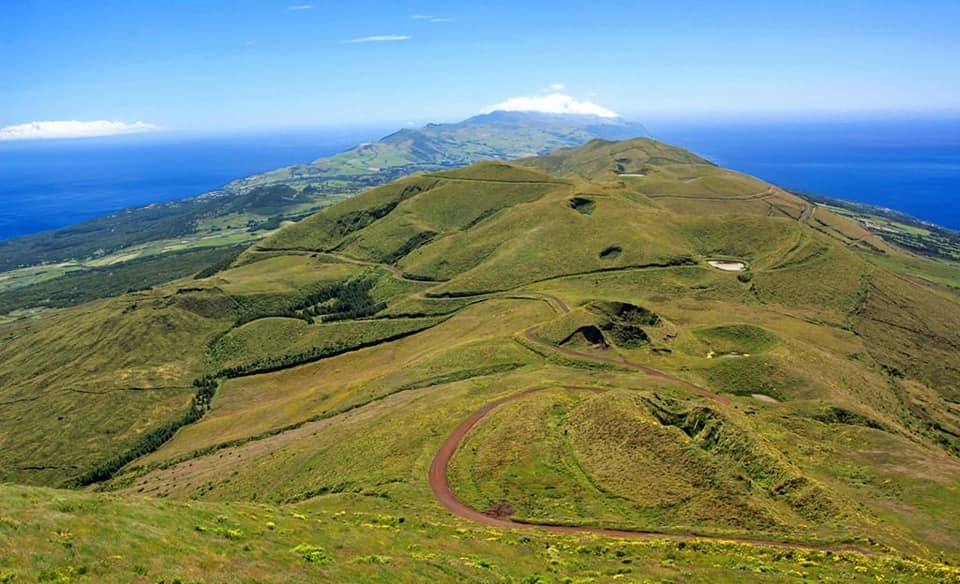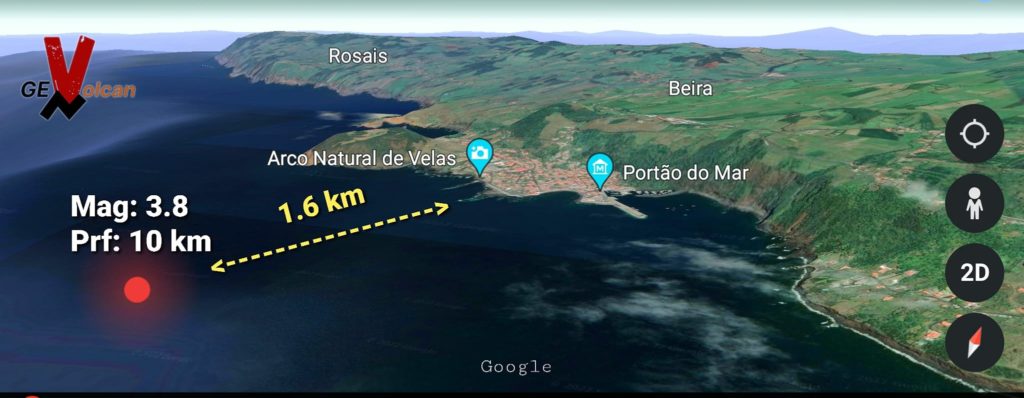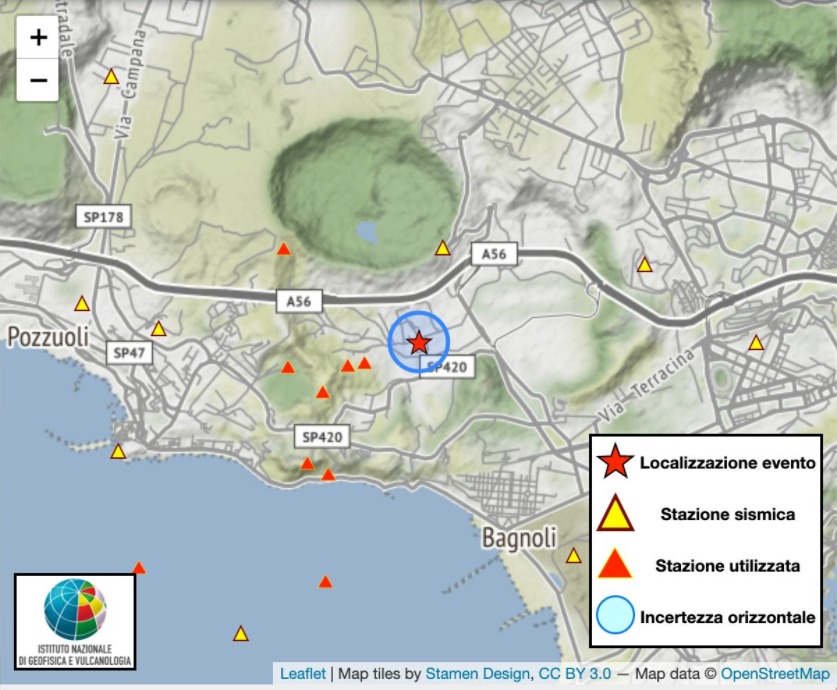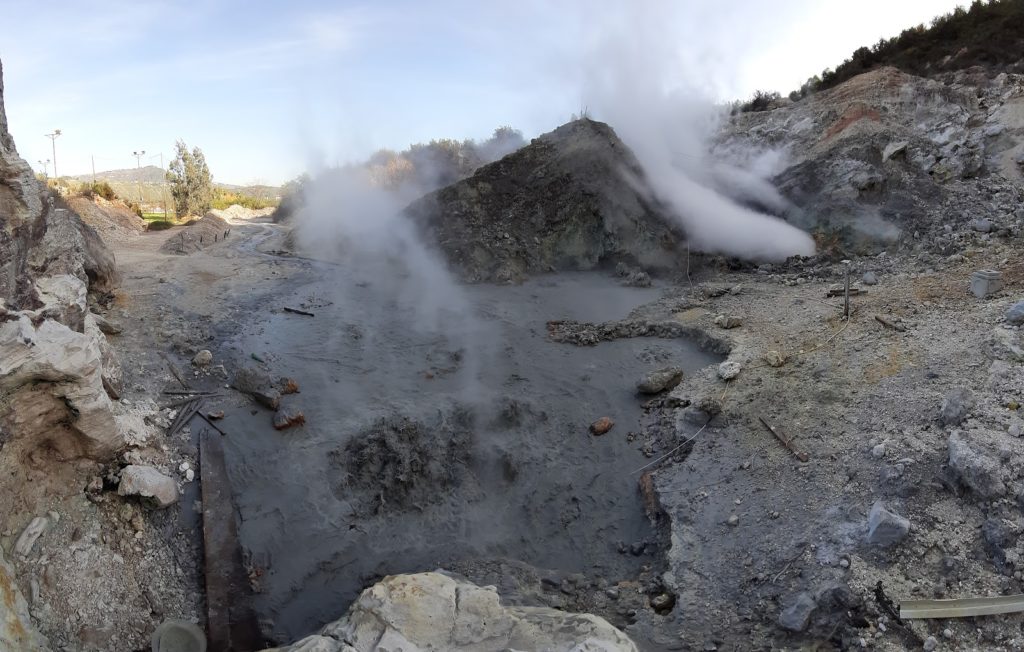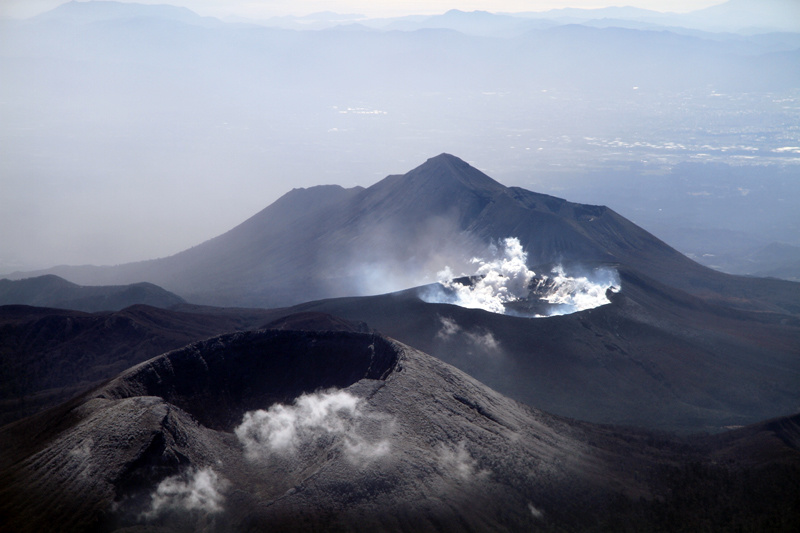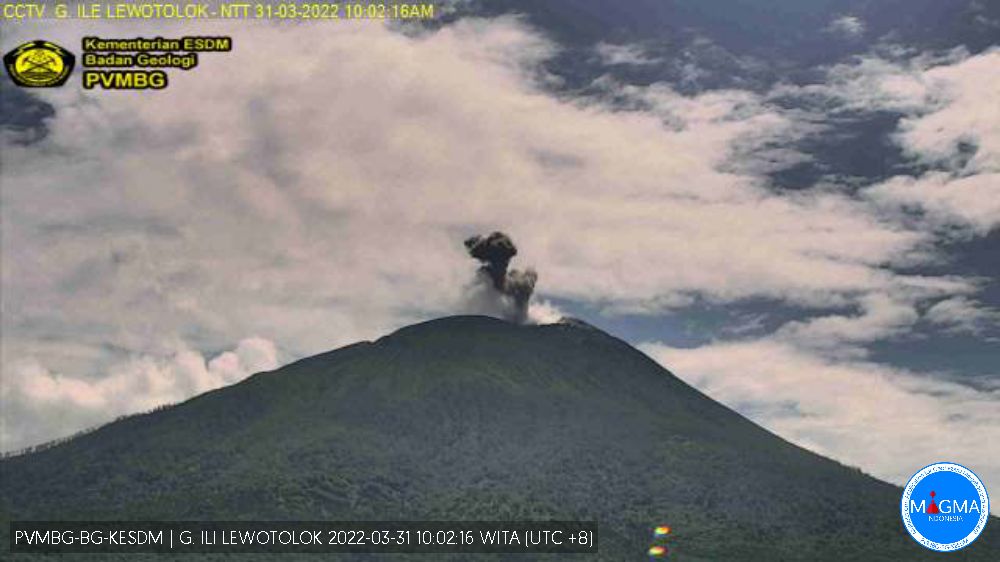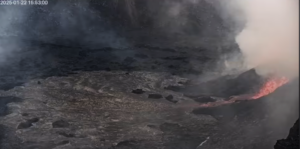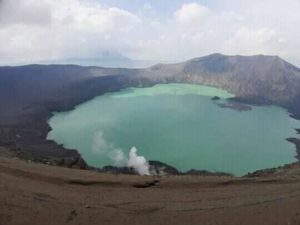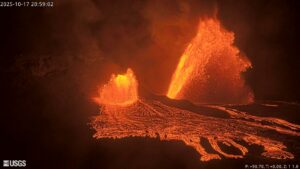March 31 , 2022.
Azores , São Jorge :
A seismic swarm beneath the W half of São Jorge began at 1605 on 19 March, with earthquakes along the Manadas volcanic fissure system between Velas (S side of the island) and Fajã do Ouvidor (N coast). CIVISA raised the Alert Level to V2 and then V3 (on a scale of V0-V6) during the morning of 20 March, and finally to V4 that afternoon. On 22 March Proteção Civil e Bombeiros dos Açores noted that, although no official evacuations had been issued, vulnerable people such as patients in the Velas health center were being moved to other locations on the island.
Supplies were being distributed to São Jorge Island and residents were encouraged to prepare in case of a volcanic eruption. On 23 March a VONA was issued, announcing that the Aviation Color Code was raised to Yellow (on a four-color scale). The total estimated population of the island was around 8,400 people; according to a news report, about 1,250 residents left the island during 23-24 March. Most of the earthquakes were low magnitude, M 1.6-3.3, though about 209 of them were felt by residents; the largest event, a M 3.8, was detected near Velas at 2256 on 29 March. By 30 March a total of about 20,000 events had been recorded. Besides the increased seismicity, CIVISA noted that ground-based Global Navigation Satellite System (GNSS) data showed inflation, which was also suggested by satellite-based data processed by partners.
M3.8 , EARTHQUAKE IN SAN JORGE, AZORES
An earthquake located by CIVISA with a magnitude of 3.8 ML, according to the IPMA with a magnitude of 4.0 ML and at a depth of 10 km, South-South-West of Velas with an epicenter in sea at 1.6 km. of said capital of the island of San Jorge, at 22:56 h. UTC yesterday, March 29, 2022, was recorded , with intensity V, , felt at Velas, Urzelina, Sto. Amaro, Rosais, Rebaños..
The swarm of earthquakes continues.
Sources : GVP , Portuguese American Journal, Centro de Informação e Vigilância Sismovulcânica dos Açores (CIVISA), Proteção Civil e Bombeiros dos Açores, U.S. News, Reuters, Açoriano Oriental, Açoriano Oriental, GEVolcans
Photos : GE volcan.
Italy , Campi Flegrei :
Weekly Bulletin, from March 21, 2022 to March 27, 2022. (Published March 29, 2022)
ACTIVITY STATUS SUMMARY
In the light of the surveillance data, it is highlighted:
1) SEISMOLOGY: In the week of March 21 to 27, 2022, 56 earthquakes were recorded in the Campi Flegrei area (Mdmax = 1.6 ± 0.3).
2) DEFORMATIONS: The average lifting speed value in the maximum deformation zone from December 2021 is about 13 ± 2 mm/month. The uplift recorded at RITE’s GPS station is approximately 87.5 cm since January 2011.
3) GEOCHEMISTRY: The soil CO2 fluxes measured last week did not show any significant changes. The temperature sensor installed in a fumarolic emission at 5 meters
from the main Pisciarelli fumarole showed an average value of ~95°C.
At 7:45 p.m. local time (17.45 UTC) on 03/29/2020, a seismic event with a magnitude Md = 3.6 +-0.3 was recorded in the Agnano area, in the Campi Flegrei, at a depth 2.7 km. The epicenter has the following coordinates: Latitude: 40 8313 (40N 49.88) Longitude: 14 1557 (14E 09.34).
GROUND DEFORMATIONS
GNSS. The average lifting speed value in the maximum deformation zone from December 2021 is about 13 ± 2 mm / month.
The lift recorded at the RITE GNSS station is about 87.5 cm since January 2011, including about 17.5 cm since January 2021.
GEOCHEMISTRY
The values of the CO2 flux from the ground recorded continuously by the FLXOV8 station in the Pisciarelli area (north-eastern outer slope of the Solfatara), highlight the persistence of the long-term trends already previously identified (see Monthly bulletins). Soil CO2 fluxes measured last week showed no significant changes from previous periods.
The chronogram shows the temperature values measured continuously from October 2018 in a fumarolic emission in the Pisciarelli zone which is approximately
5 meters as the crow flies from the main fumarole. During the last week, the measured values showed an average value of ~95°C, the boiling value of the emitted fluid.
Source : INGV.
Photos : INGV , Pisciarelli , Tullio Ricci, dicembre 2019.
Japan , Shinmoedake :
JMA reported an increase in volcanic earthquakes just below Shinmoedake (Shinmoe peak, a stratovolcano of the Kirishimayama volcano group). A total of 21 events were recorded during 26-27 March, prompting JMA to raise the Alert Level to 2 (on a scale of 1-5) on 27 March. Volcanic earthquakes continued to be recorded during 27-28 March. A two-minute-period of volcanic tremor began to be recorded at 1624 on 28 March. Minor deflation first recorded in December 2021 was ongoing. Fumarolic plumes continued to rise no higher than 100 m from a fissure on the W flank. The public was warned to stay at least 2 km away from the crater.
Kirishimayama is a large group of more than 20 Quaternary volcanoes located north of Kagoshima Bay. The late-Pleistocene to Holocene dominantly andesitic group consists of stratovolcanoes, pyroclastic cones, maars, and underlying shield volcanoes located over an area of 20 x 30 km. The larger stratovolcanoes are scattered throughout the field, with the centrally located Karakunidake being the highest. Onamiike and Miike, the two largest maars, are located SW of Karakunidake and at its far eastern end, respectively. Holocene eruptions have been concentrated along an E-W line of vents from Miike to Ohachi, and at Shinmoedake to the NE. Frequent small-to-moderate explosive eruptions have been recorded since the 8th century.
Sources : GVP , Japan Meteorological Agency (JMA)
Photo : S. Nakano 08.03.2011 / Geological survey of Japan.
Indonesia , Ili Lewotolok :
VOLCANO OBSERVATORY NOTICE FOR AVIATION – VONA
Issued : March 31 , 2022
Volcano : Ili Lewotolok (264230)
Current Aviation Colour Code : ORANGE
Previous Aviation Colour Code : orange
Source : Ili Lewotolok Volcano Observatory
Notice Number : 2022LEW09
Volcano Location : S 08 deg 16 min 19 sec E 123 deg 30 min 18 sec
Area : East Nusa Tenggara, Indonesia
Summit Elevation : 4554 FT (1423 M)
Volcanic Activity Summary :
Eruption with volcanic ash cloud at 04h04 UTC (12h04 local). Eruption and ash emission is not continuing.
Volcanic Cloud Height :
Best estimate of ash-cloud top is around 7114 FT (2223 M) above sea level, may be higher than what can be observed clearly. Source of height data: ground observer.
Other Volcanic Cloud Information :
Ash-cloud moving to Northwest
Remarks :
Seismic activity is Dominated by gas emission earthquake
Source : Magma Indonésie .
Colombia , Purace :
Subject: Modification of the level of activity of the Puracé volcano. The level of activity of the Puracé volcano is changed to the yellow level or (III): changes in the behavior of volcanic activity.
Regarding the monitoring of the activity of the Puracé volcano, the COLOMBIAN GEOLOGICAL SERVICE-SGC, reports that:
There has been a major change in the activity of this volcano over the past two days. As indicated in the bulletins and communications of the previous months, there have been progressive changes in the behavior of this volcano, which from March 28 had a greater increase in recurrence, both in the events associated with the fracture of the rock in the volcanic building (type VT), presented in swarms of events and with magnitudes up to 3.3 ML, than fluid events (type LP and TR), the latter being the more frequent, with high energy intake and durations that reached 23 minutes. On the other hand, changes have been observed in other monitoring techniques such as volcanic soil deformation and fluid geochemistry.
As part of the prior knowledge of the behavior of this volcano, passing through the gradual changes observed in recent months, until the sudden increase in energy of the last hours, the SGC determines that this behavior has evolved from levels based over more than 25 years of instrumental monitoring and therefore a change in activity level is declared at level III.
The yellow activity level (or III) considers variations in the levels of parameters derived from monitoring that indicate that the volcano is above the base threshold and that the process is unstable and can evolve, increasing or decreasing said levels . At this level, it is possible to record phenomena such as earthquake swarms, some of which are felt, ash emissions, lahars, morphological changes, noise, volcanic gas odors, which can alter the quality of life of populations in the area of volcanic influence.
It is recommended that the community continue to be alert to any changes that occur in the activity of the volcano.
Source : SGC.
Photo : José María Arboleda C

